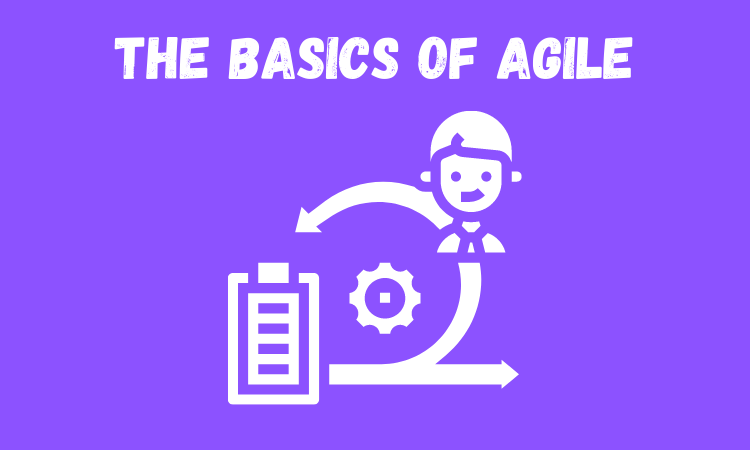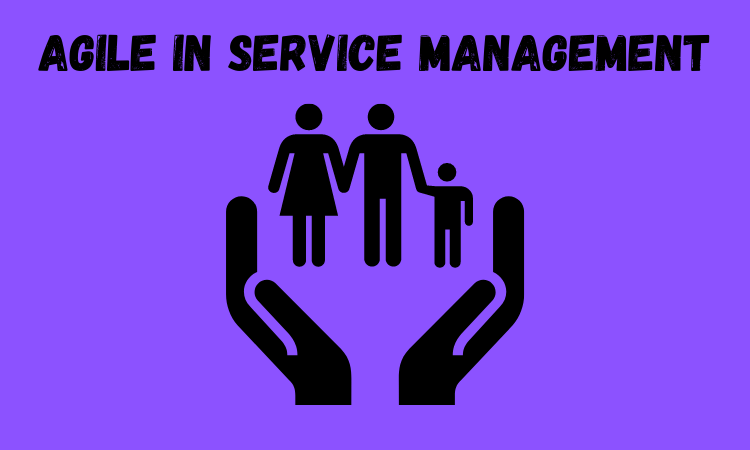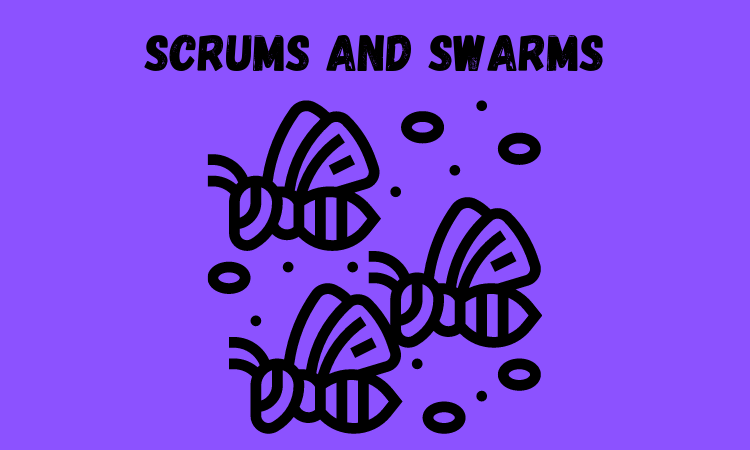AGILE ITSM: THE ESSENTIALS –AGILE FUNDAMENTALS

This is the second post in my series on Agile ITSM. You can find the introductory post HERE. This post will be the longest in the series by far, so I hope you stick with it because it is the foundational post if you are not familiar with Agile. Even if you are, it wouldn't hurt to review as we move forward in the series on Agile ITSM. Anyway, here we go!
What is Agile Service Management?
Agile is an overarching term for a framework that a team can use to focus on prioritization, collaboration, and project completion quickly.
To put it another way, agile is a mindset. A mindset that plans will have changes and your team must be able to adapt to the changes fast.
Agile ITSM is the modification of this mindset within the IT service management sector. It focuses on adapting to solve problems with particular emphasis on keeping the clients of your IT services up and running with barely any wait time or annoyance.
Just like a fighter, an IT service organization must have instincts that allow them to be quick on their feet, bob and weave, constantly changing stances and shifting direction so they are not hit hard or knocked out.
There is no real manual for Agile. An IT service organization should build on policies, processes, and govern according to them. This is especially true if your ITSM framework is based on something like ITIL, ISO 20000, or FiTSM, which we will get into later in this series of posts.
However, at this time it is sufficient to understand that agile is not and should not be a rigid framework where you build tight constraints. Instead, agile is the mindset requiring an organizational culture shift that welcomes and cultivates change.
Where Did the Concept of “Agile” Begin?
Back in 2001, a group of software-developing smart folks puts together the Agile Manifesto with four simple values. These folks later made the four values into twelve principles focusing primarily on software development, but do not let that dissuade you if you are not a developer or a software developing organization because they still apply. These values and principles prioritize client satisfaction and employee satisfaction as well. It also places a renewed focus on value delivery.
(Does ITILv4 come to mind yet for those familiar with it?)
The values and principles concentrated on bettering the processes for software developers in enterprise organizations with many levels in the organizational structure which could slow down, or completely stop, development of a project.
Like I stated before, do not let the fact Agile was created by software developers dissuade you if you are not a software developer or a software company. These values and principles are applicable for other types of business units and functions, especially IT service organizations.
These four values and twelve principles can apply to any size team and organization and support viable results.

What are the Advantages of Prioritizing Agility in Service Management?
So, you might be asking; “Why should I bother with this agile stuff if my processes are already working?”
To answer that question, I will point you to a study that found 93% of businesses that adopted Agile before this current pandemic performed better than non-agile businesses.
Additionally, an article in the Harvard Business Review points out that toward the end of the agile shift, executive leaders spend four times the amount of time on strategy and less on operations management.
Due to this fact, there are companies allocating more of their leaderships’ time from the functional silos to agile leadership teams.
Agile has major effects in terms of financial impact. After adapting an agile approach, companies have shown 60% growth in profits.
So, besides saving time for organizational leadership and optimizing costs, agile can generate faster outcomes. According to HBR, one business was able to considerably compact innovation project cycle times, in more than one project by 75%.
Going a step more, the VersionOne 12th Annual State of Agile Report states that 71% of organizations state that agile methods and agile ITSM frameworks permit them to manage to change priorities better. Also, the report shows that 65% of organizations with an agile approach believe the agile methods assist them to come into total alignment with the business. A further 62% of these organizations state that the agile approach allows them to increase the delivery speed of their services and products.
What Are Some Additional Benefits of Agile?
Constant Testing and Learning
Typically service management, especially IT service management, is not very tolerable of encouraging and accepting risk. However, with an agile ITSM approach, taking risks is rewarded and time is allotted regularly, daily even, to find improvements and pressure test and find issues in the systems. This benefits everyone from the developers to the engineers, to the call center technicians by giving them the ability to continually refine, experiment, and learn through continuous improvement.
Better Feedback Loops
The typical feedback loop in a process is when the output of a process or system circles back and is used as an input. Using the agile approach, feedback loops are enhanced due to the fact they are abbreviated and magnified.
Better Workflow
The workflow will certainly change when concentrating on keeping things agile. Embracing an agile mentality means recognizing that nor all incidents need to be resolved as rapidly as possible. Instead, more value to clients can be delivered through prioritization. In the case of ITSM, you can add more value to clients by working higher priority tickets for incidents and problems first over the lower priority items that cause clients less frustration.

What is a Scrum?
No discussion of agile fundamentals would be complete without talking about Scrum. A scrum is made up of a small team, called a scrum team obviously. This team works together for a set period, from a few weeks to a few months to solve a problem. The team is small with nine or fewer people on average. They work together using step-by-step methods, realistic deadlines, and short “sprints”.
Sprints help the team stay real and transparent about what it can and will accomplish with tangible results supplied at the close of each sprint. Upon conclusion of each sprint, the customer provides feedback on outcomes that are then taken into consideration for the next sprint. This allows the customer to contribute useful and helpful feedback into the feedback loop and your scrum team can refine the processes as they go. Your team and organization become agile through continual improvement and adapting from the feedback of the customer.
Using a scrum, the risks are more manageable as well in the short term. You can assess roadblocks as you go along and address issues. You can then think through the possible effects of adjusting the work of your team throughout the process.
This can be taken one step further through timeboxing. Timeboxing allows a team to allocate a set period in which to allow the scrum team to solve a problem. Timeboxing is best used with the swarming method in the scrum team which is discussed next.
What is Swarming?
Sorry, but in this context, it doesn't have anything to do with #Hive.
As discussed earlier, swarming takes place during a sprint, usually during timeboxing. It is used by the team to jointly deal with different facets of the problem while working as quickly as possible, thus lessening downtime. With Agile ITSM, swarming allows for an incident ticket to be picked up by the person who can most likely resolve it the quickest, and not the service desk.
This all can be accomplished in sprints and by collectively tackling different aspects of the problem as fast as possible it shortens downtime for the customer and decreases the business impact.
Conclusion
That’s it for now, my next post will be on Agile and ITIL 4. Let me know what you think?
Feel free to share some thoughts on the topic and what you might expect to see as we move forward in future posts in the comments section. I love to hear from and engage with you.

GET IN EARLY!
Thanks for your contribution to the STEMsocial community. Feel free to join us on discord to get to know the rest of us!
Please consider delegating to the @stemsocial account (80% of the curation rewards are returned).
Please consider including @stemsocial as a beneficiary to get a stronger support.
That's an informative post. Feel free to come by the STEMsocial discord and join the community. :o)
Thank you. I am already in the Discord group, I just haven't been there in a while. My friend @gentleshaid invited me to it a few months ago. I'll look to start poking my head in more often.
Your content has been voted as a part of Encouragement program. Keep up the good work!
Use Ecency daily to boost your growth on platform!
Support Ecency
Vote for new Proposal
Delegate HP and earn more
Thank you.